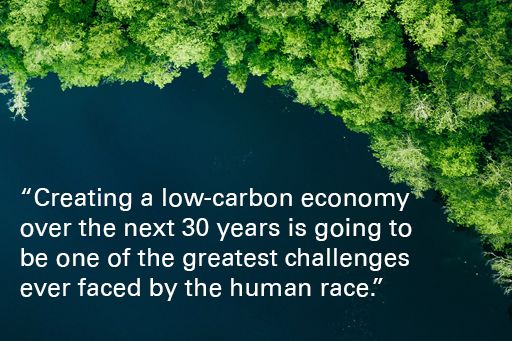The call to action on climate change has advanced over recent years with companies facing more pressure than ever to develop and execute a meaningful net-zero strategy.
Investors are acutely aware of the relationship between stewardship and financial performance. The message to leaders is clear: Climate risk is being viewed as a financial risk, a driver of business insecurity. In a world of concerned stakeholders, organisations that fail to mitigate their emissions face the likelihood of reputation damage.
Many Fortune 500 companies have outlined decarbonisation strategies to achieve their targets. These strategies rely on a number of levers that include accelerating the shift to renewables, developing new product offerings, re-locating facilities, investing in carbon capture and optimising tax credits. The detailed strategies vary significantly across industries, but there are basic elements that apply to every organisation.


At the center of the net-zero imperative are five pillars of action
Organisations on the net-zero journey need to gather and analyse data that gives a clear picture of their emissions footprints. In order to build confidence in companies’ pledges, data should be objective, easy to compare and up to date. To achieve this, companies should look beyond simple reporting tools and consider a broader technology framework to manage the entire process, infusing trust along every step.
1. Decarbonise with strategic foresight
Leaders across sectors have to address several competing imperatives: recover from the COVID-19 crisis, prepare for a world of artificial intelligence (AI) and extreme automation, and grow in increasingly competitive markets, while achieving their net-zero pledges.
Key steps toward low-carbon and net-zero operations include:
- Ensure decarbonisation aligns with your overall business strategy;
- Evaluate and develop a common understanding of the nonlinearity of climate change, competition for renewables and offsets, and the impact of decentralised energy in the marketplace;
- Define the reporting strategy for internal and external stakeholders, including public disclosures;
- Shift your capital structure to account for the increasing role of climate in finance;
- Align executive compensation with environmental performance;
- Demonstrate provable progress through targeted emissions- reduction initiatives that support broader business goals.
2. Operationalise sustainable behaviour
Understanding your carbon footprint is just the beginning. The key to ingraining sustainability in your operations is to focus on the business case for these initiatives. Further, incorporating decarbonisation into your existing in-flight and proposed organisational transformations may unlock additional benefits for the business and stakeholders.
The fundamental shift that needs to happen when an organisation seeks to decarbonise can only be achieved if the people and cultural psychology of that organisation have fundamentally shifted as well. This is not something that can be easily compartmentalized. It has to infiltrate every part of an organisation so that climate risk and opportunity become instinctive parts of business thinking at every level.
3. Gain regulatory agility
Without the mechanism in place to reliably report emissions reductions, many organisations risk getting caught flat-footed as regulations and standards tighten.


4. Accelerate climate-focused partnerships
Many of the world’s leading brands are setting the standard with ambitious goals of eliminating their GHG emissions. It is becoming increasingly common for leading companies to pursue their agendas in partnership with industry peers, industry groups, NGOs, and suppliers that can help leaders hone their strategies.
All the mechanisms for achieving net-zero are not yet apparent. However, the pain points across organisations are similar. By looking outward for partners and alliances across sectors, organisations can collaborate on action, spark innovation, and accelerate broader progress toward larger societal goals.
5. Build trust and prove results
Demonstrating provable progress is critical when it comes to capitalising on the strides made through decarbonisation programs. Customers, investors, lenders, and stakeholders are looking for transparent and high-fidelity data to support claims of progress, i.e., reputational and financial benefits.
The convergence of powerful technologies – cloud computing, machine learning, blockchain – to drive insights into emissions, arrives at a tipping point when time is running out to prevent global atmospheric temperature from rising above the threshold marked by 1.5°C.
The era of climate action demands climate accounting
The era of climate action has arrived: Stakeholders want to see net-zero strategies in place – and they will want to see proven results. The degree to which an organisation can pursue action-oriented strategies will depend on the nature of the business and how far the company has already advanced its efforts on net zero.
At the center of the effort is the ability to report mitigation results. The very technologies driving wholesale transformation are the foundations of a platform that serves up two key elements: traceability and accountability.
Net-zero pledges won’t mean much to consumers and investors unless there is action and verifiable progress behind them. Regulators will want proof of compliance.
A net-zero strategy that deploys emissions accounting can provide the trusted traceability and reporting that are the critical stepping stones toward honoring net-zero pledges.
Contact us
Connect with us
- Find office locations kpmg.findOfficeLocations
- kpmg.emailUs
- Social media @ KPMG kpmg.socialMedia

